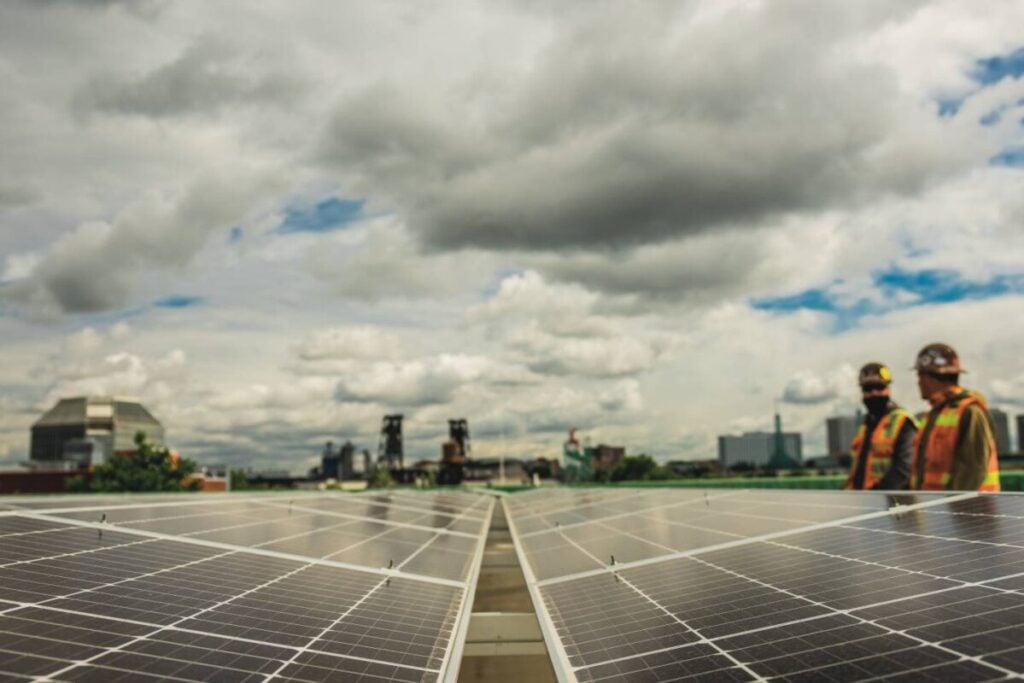
Energy-Storage.news speaks with Karina Hershberg, Associate Principal at engineering firm PAE Engineers, on integrating microgrids with sustainable building design.
Microgrids are autonomous energy systems capable of functioning independently or linked to the main grid. They offer the flexibility to switch between modes, allowing communities or critical facilities, like hospitals or emergency shelters, to disconnect from the grid during outages.
The systems are gaining popularity in regions vulnerable to extreme weather or wildfires. For instance, microgrids are starting to be commonly used in California because they can disconnect from the main grid during power outages and keep supplying energy.
Underscoring the technology’s importance, in 2023, the Grid Resilience and Innovation Partnerships (GRIP) programme was announced by then US Secretary of Energy Jennifer Granholm and White House Infrastructure Implementation Coordinator Mitch Landrieu.
Try Premium for just $1
- Full premium access for the first month at only $1
- Converts to an annual rate after 30 days unless cancelled
- Cancel anytime during the trial period
Premium Benefits
- Expert industry analysis and interviews
- Digital access to PV Tech Power journal
- Exclusive event discounts
Or get the full Premium subscription right away
Or continue reading this article for free
GRIP was a US$10.5 billion programme that looked to “strengthen grid resilience and reliability” across the US, including funding for 400 separate microgrids.
PAE’s Karina Hershberg says of microgrids now, “Every day, I’m talking with clients about their interest in microgrids, and a lot of it’s coming from an interest in energy resilience, an interest in having a little bit more agency over their energy systems, over their utility bills, and over the type of energy that they’re getting.”
A similar sentiment was echoed in ESN Premium’s interview with microgrid solutions provider BoxPower’s Director of Business Development, Fallon Vaughan and Sales and Marketing Coordinator Noa Schachtel, when Vaughan noted:
“Microgrids are traditionally seen as backup or grid-tied systems to provide energy when the distribution or the wider grid fails. But for us, we see these as a complete energy alternative, so they have to perform as such.”
PAE is increasingly including microgrids, with numerous energy storage options, in its engineering projects.
Integrating microgrids at PAE
PAE was founded in 1967. In 2013, the company built a new office in Seattle, Bullitt Centre, the world’s largest commercial ‘Living Building’ in an urban setting. Essentially, it is a regenerative, self-sufficient building built to last for 500 years.
Hershberg notes, “We have on-site solar, and then we have on-site batteries. Batteries that can go inside buildings—that is not a market that has a lot of options right now.”
The company started integrating microgrids, Hershberg says, a little over a decade ago.
“We slowly started to see more and more microgrids. We were coming at it from a place of belief that this really was the future of energy systems, but there wasn’t an understanding of the industry. The technology wasn’t ready yet. The necessary systems infrastructure wasn’t ready yet.”
Hershberg continues, “There has been such a transformation, even in recent years, as the technologies are maturing much more. But I think, too, there’s been this growing awareness within building owners, communities, and society at large, that we are in this sort of transition happening in our energy systems and our relationship with our energy systems.”
The company often installs microgrids that pair solar PV with a battery energy storage system (BESS). However, PAE has also done projects integrating in-pipe hydro energy storage and small-scale biomass storage.
Typically, BESS for PAE’s microgrids are less than 1MW and more than 100kW. Hershberg explains it as “not residential scale, not utility-scale, right in that middle. There aren’t a lot of companies offering that product. We call it the missing middle.”
She continues, “Elm is the only real player in it right now, and they have a good product, team, and control system. I’m thankful that they exist in the industry right now, because they can fill that little niche. Still, it is interesting that there’s a lot of interest and demand in the bigger-than-a-Tesla-Powerwall, less-than-a-megawatt range, and just not much product availability right now.”
Elm is a microgrid company with a small business BESS solution, the ‘ELM CMG’. Elm’s BESS has a capacity of 258kWh and uses lithium iron phosphate (LFP) battery cells.
The company says it uses US-based manufacturing and a domestic supply chain. In April 2024, it opened a manufacturing and distribution facility in The Colony, Texas, to design and manufacture its microgrid and solar thermal technology. It also has a manufacturing site in Oklahoma.
Following the signing of the US budget reconciliation bill, there has been an increased focus on establishing a US supply chain for BESS materials.
Hershberg explains, “We’ve definitely seen shovel-ready projects that went on hold because of loss of federal funding and things like that. There’s been some straightforward impacts to projects and the communities that they were benefiting.”
Despite these challenges, Hershberg believes microgrids will remain popular.
“Even though there’s a lot of uncertainty on things like the investment tax credit (ITC), and how it affects project costs, etc. I have not seen any decrease in interest in these systems. I would argue very strongly that I’ve seen a notable increase in interest in these systems, I think, in reaction to a lot of the other uncertainty happening,” Hershberg says.
